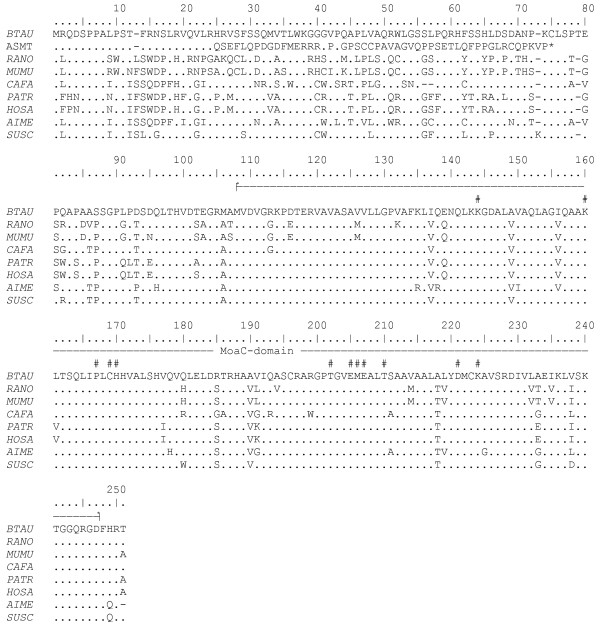Figure 4.
Comparison of deduced MOCS1B amino acid sequences among cattle, rat, mouse, dog, chimpanzee, human, giant panda and pig and the mutated protein causing the bovine arachnomelia syndrome. Sequences were derived from GenBank (BTAU, Bos taurus, gi 261490661; RANO, Rattus norvegicus, gi 149069513; MUMU, Mus musculus, gi 161484628; CAFA, Canis familiaris, gi 73972793; PATR, Pan troglodytes, gi 114607308; HOSA, Homo sapiens, gi 30913216; AIME, Ailuropoda melanoleuca, gi 281353482; SUSC, Sus scrofa, gi 19403921). The second line shows the predicted MOCS1B amino acid sequence of calves carrying the arachnomelia syndrome mutation (ASMT) The line above the sequence alignment indicates the MoaC-domain and number signs indicate the highly conserved amino acid residues that are thought to be involved in the biosynthesis of precursor Z [31].

